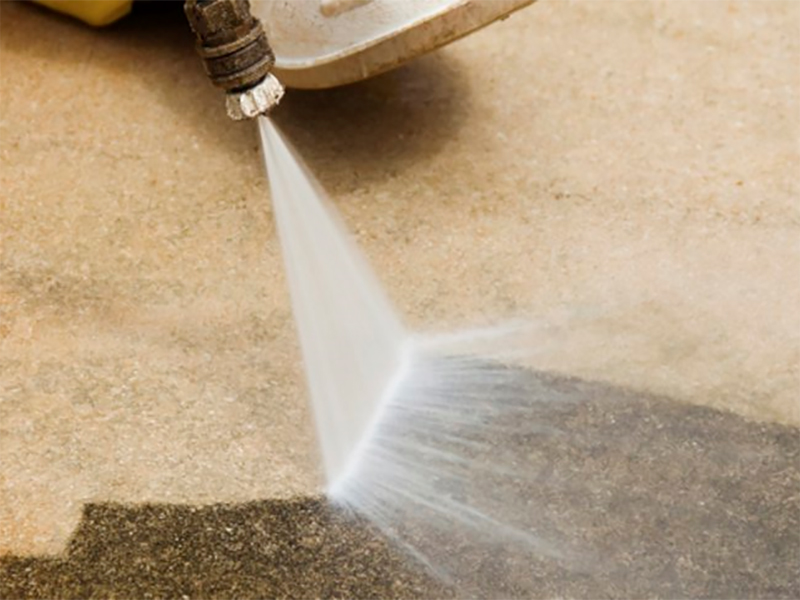https://www.realestate.com.au/property-apartment-vic-sandringham-128416666 Live inside-out high above it all with al fresco entertaining, 5 Star resort facilities and...Read More→

Quality photographs can help to make a favourable first impression when buyers are searching the internet or the papers, and they can certainly help your property stand out from your competitors. So it is very important to prepare your property carefully and ensure that due care is taken when photographing your home.
Over the years we have found that taking the time to get the best possible photographic images can make a real difference to the results each vendor achieves. This is why our team at Ian Reid Vendor Advocates take the time to screen every property image before approving them for use.
Every property is different, but there are a few key tips that apply to every situation when photographing your home. They include:
If you’re looking for even more tips on how to avoid making expensive mistakes when you sell, you’ll find lots of them in our FREE booklet “Fatal Real Estate Traps Exposed”. So why not download a free copy while you’re here?

For those who like to watch the property market closely, the market segment that recorded the largest drop was new apartments, where building approvals fell 17.2 per cent in August. This represented a year-on-year drop of 23.4 per cent when compared with August 2017. The ABS reported that approvals for standalone houses showed a gentler drop of 1.9 per cent in August and 4.4 per cent year-on-year.
Whilst any fall in building approvals is never good news for the overall economy, this trend is particularly concerning when you consider the rate that our population is growing, as we pointed out in OUR POST LAST MONTH.
Interestingly, an analysis of this data by economists at the ANZ Bank has revealed that unlike past falls in housing approvals, this latest drop has been driven by a tightening of the credit market rather than the usual lifting of interest rates.
If this proves to be the case, then we see this trend continuing for some time to come. A Senior Economist at the ANZ has been quoted as saying, “If we assume no easing of the credit tightening until at least after the royal commission delivers its final report in February 2019, then it seems reasonable to expect that dwelling approvals could be off as much as 15–20 per cent in trend terms by early next year.”
In the longer term, it is worth remembering that any fall in residential construction will cause an even lower level of supply of housing in a market where demand continues to grow as a result of an increasing population…Concerns about the affordability of housing look likely to continue.
If you have questions about how your own local property market is been performing, or you are wondering how to maximise the price you achieve when you sell in the current market, don’t hesitate to give Floris Antonides a call on 0418 504 915. You can also get a FREE copy of our booklet, Fatal Real Estate Traps Exposed, while you’re here on our website.

Should they buy their next property first, then sell their existing home, or vice versa? The fact is that there is no straightforward answer that will suit every person, as the answer will depend very much on your own personal circumstances and preferences. But, having said that, here’s an outline of the relative pros and cons of each option so you can make your own informed decision.
As a general guide, we tend to find that in a ‘normal’ property market most people prefer to sell their existing home first, then purchase their next home afterwards. This approach gives you some certainty as to how much your current property is worth, and therefore what your budget will be for the next property. It also gives you certainty on the timing of the settlement for your current home so that you can aim to move just once.
The downside to this approach is that if you have difficulty finding and securing your next home, you may end up having to find temporary accommodation in between settlements, which will mean making two moves rather than one.
This approach was certainly more popular in recent years, due mainly to the strength of buyer demand. With more buyers than sellers, many people knew they would be able to sell their current property with relative ease…but securing their next home was more of a challenge!
However, buying before you sell in the current market conditions can be more financially complex, particularly if you do not have access to the full purchase price of your new home without relying on the proceeds of the sale of your existing home.
Buying first may mean that you find yourself under extra pressure to sell your existing property by a set date, meaning you may be under pressure to accept a lesser offer than you would like. In this situation you may also need bridging finance, which can be a more expensive form of loan than your standard home loan.
One option if you are considering buying first is to make your purchase conditional on the sale of your existing home. However, in many cases the sellers of your new home may not wish to accept a conditional offer, so it will put you at a disadvantage in any negotiations.
Clearly, if your peace of mind is an important element to your decision, you may prefer to sell your existing home first. But as we all know, it’s hard to predict when we might stumble across the ‘dream home’ that we simply “have to buy”.
Don’t forget that if you are at all unsure about the right way to proceed when planning a move, we are always happy to provide you with sound advice and assistance, and our service won’t cost a cent more than having to deal direct with an agent.
You can call Floris Antonides anytime on 0418 504 915.

While we are not in the business of providing advice on home loans, it is a topic that does crop up when advising senior home owners on their property dealings.
With this in mind, we wanted remind readers that whilst a reverse mortgage can be a helpful form of financing for retirees who are “asset rich but cash poor”, the recent Royal Commission into the financial industry has reminded many Australians of some of the shortcomings of this form of home loan.
A reverse mortgage is a type of mortgage loan that is specifically designed for pensioners and retirees. Sometimes referred to as a senior’s loan, a reverse mortgage enables homeowners aged over 60 to convert the equity in their property into cash. The loan is secured by a mortgage over the borrower’s house and whilst interest is charged just as with any other form of loan, you don’t have to make repayments while you live in your home. Instead, the interest compounds over time and is added to your loan balance. Repayment of the loan only occurs when you sell your home, you move to an aged care home or you pass away, but you are usually allowed to make voluntary repayments if you wish.
Since September 2012, laws have been in place to protect anyone with a reverse mortgage from owing the lender more than the property is worth…a situation known as negative equity. However, this is still a concern if you took out a reverse mortgage prior to that date.
Generally speaking, the main issues with taking out a reverse mortgage today are:
Clearly, there are several reasons to tread carefully where a reverse mortgage is concerned.
As we all know, a number of financial products have come under review as the Royal Commission continues to examine recent lending practise. Indeed, the Australian Securities and Investments Commission (ASIC) has suggested that lending standards on reverse mortgages have not always been fair for elderly borrowers.
ASIC has said that borrowers do not have sufficient understanding of the risks and future costs of their loans, along with the impact on their ability to fund their needs in the future. The Deputy Chairman of ASIC, Peter Kell, has been quoted as saying that while reverse mortgage products can help many people entering retirement achieve a better quality of life, there is still a need for a thorough risk analysis.
In our experience, it is always wise to seek independent advice on any financial decision, whether it affects your home or not. Of course, if you do have questions about selling your home, you’ll find lots of tips in our FREE book, Fatal Real Estate Traps Exposed, or you can call the Floris Antonides any time on 0418 504 915.

So if you put yourself in the shoes of a buyer who is inspecting your property for the first time, one of the first things the buyer will see is your driveway. Unfortunately, many sellers tend to overlook this aspect of their property as they are so used to seeing the faults in this area of their property, such as cracks and oil stains, on a daily basis.
For a simple and easy way to improve that vital first impression, here are some tips on removing oil stains from your driveway and garage floor.
Our friends at Bunnings tell us that smaller stains, and those that have not been around long, can normally be removed with hot water, detergent and a steel brush. It may take more than one application, but a good scrub using these simple tools will often do the job.
For stubborn longer-term oil stains, you’ll need a degreaser, which is a more powerful, concentrated cleaner. This liquid is designed to remove ingrained dirt, and most automotive fluids without damaging the surface.
The degreaser will have instructions on the pack, but please make sure you wear the correct protective gear, including goggles and gloves.
The normal procedure is to apply the degreaser to the stained area and leave it for a short time, (often a few minutes), then scrub it with a steel brush. The instructions will normally advise leaving the area for a further five to ten minutes, but do not allow it to dry out completely. You can then wash the area thoroughly with water…but be conscious about where you are washing the used degreaser to. The aim is to wash all your materials into the drains, not into the garden.
You may find that some further staining comes to the surface a day or two after cleaning, but this can be dealt with by repeating the above process.
Don’t forget, if you need any advice on preparing your property for sale, particularly if you are unsure about what is worth doing and what isn’t, the team at Ian Reid Vendor Advocates are always happy to help.
You can call us on 0418 504 915, and you’ll find lots of helpful tips in our FREE booklet “Fatal Real Estate Traps Exposed”.